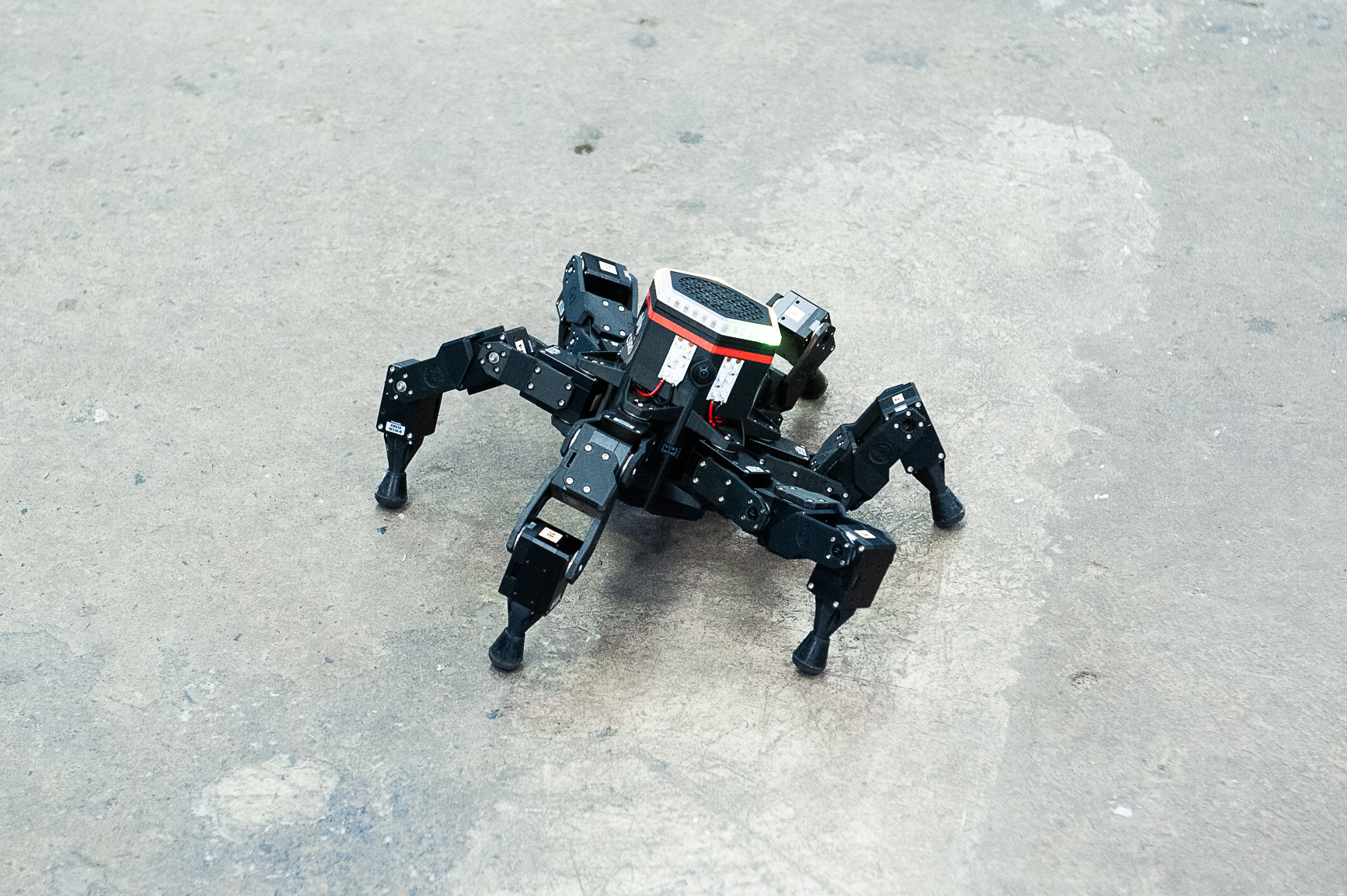
You might have spotted this robot at D61+Live in Sydney this year.
Artificial Intelligence (AI) is one of those technologies that has the power to change life itself. It has the potential to transform economies, unlock new societal and environmental value, and speed up scientific discovery.
With AI estimated to generate $13 trillion in economic activity globally by 2030, the race to lead in AI is well underway.
From agriculture and climate, to energy and health care – we’re looking at AI across many areas. And, most importantly, the AI Roadmap is going to help us get there.
Back to basics: What is artificial intelligence?
AI describes a collection of technologies able to solve problems and perform tasks without direct human guidance. Examples of AI include machine learning, computer vision, natural language processing, robotics and deep learning.
AI uses data-driven algorithms to solve problems and perform tasks. These algorithms have existed for quite some time. However, advances in computing power and the affordability of hardware now means that people can apply AI at a scale like never before. Moreover, we’re generating more data than ever so the time is ripe to take advantage of AI technology.
How is AI already used?
Our AI-powered projects range from sensors monitoring the structural health of the Sydney Harbour Bridge, to companion robots for children on the autism spectrum.
You even have AI in the palm of your hand. Your smartphone contains an AI chip powerful enough to perform up to five trillion operations per task.
As we become more tech-centric, large amounts of data, and the high-powered tools needed to understand it, are becoming available. As a result, we can speed up and optimise every aspect of the future.
What we’re doing with AI
1. Helping our farmers make more informed decisions
Deep Learning Models are a machine learning technique that trains an algorithm to learn without supervision, while performing multiple tasks. We’re applying this concept to agriculture to help farmers make more efficient and sustainable growing choices.
Farmers need to make complex decisions about how they use their water. AI can help farmers make those decisions including how and when to look out for pests or diseases.
This also extends to farmers whose produce is in water. For instance, water conditions in prawn ponds can quickly change from healthy to threatening in a matter of hours. On the other hand, current methods for monitoring water quality are hard work and can cause serious delays between measurements. This makes it difficult to identify and act on important trends in the data.
Our researchers have developed a new augmented reality system for just this problem. The system gives prawn farmers real-time information of the water quality in their prawn ponds. As a result, they can respond and make changes quickly and efficiently.
2. Optimising our energy network
Australia’s energy grid was initially designed only to manage a small number of energy sources. But now there are many different sources, including hydroelectricity, solar and wind farms. Therefore AI and machine learning are crucial to developing an efficient and adaptable energy network.
We’re creating a model of Australia’s energy supply network. This is being done using digital simulation to improve efficiency and disaster management. It can also incorporate emerging power sources into the existing grid. This helps determine the best way to upgrade our energy network in the future. As a result, it could lead to billions of dollars in savings.
3. Better analysis of Australia’s climate
Machine learning can also help us predict the future of Australia’s atmospheric conditions. Our Climate Science Forecasting team use machine learning to understand complex environmental patterns and emerging weather trends.
By mining large amounts of historical data and statistics, we can find common drivers across similar climate patterns. Then, we can learn more about how these patterns function. We can also determine if we can prevent, speed up or otherwise manipulate the drivers of climate change.
4. Understanding genetic diseases
Motor neurone disease (MND) is causes rapidly increasing muscle weakness. It occurs particularly in muscles that allow for movement, speaking and breathing.
We’re using machine learning to analyse the genetic makeup of MND. Previously, we couldn’t analyse this much data with traditional methods.
The AI Roadmap
The AI Roadmap (Artificial Intelligence: Solving problems, growing the economy and improving our quality of life) outlines why it’s import for Australia to capture the benefits of AI.
We’ve already taken the first steps towards determining our future with AI. But more people, industries, and communities must join the conversation.

